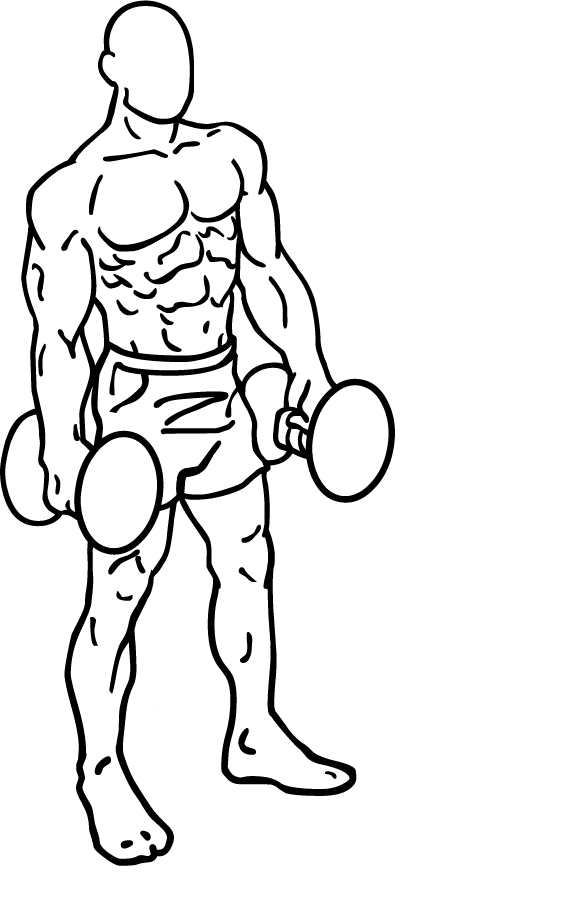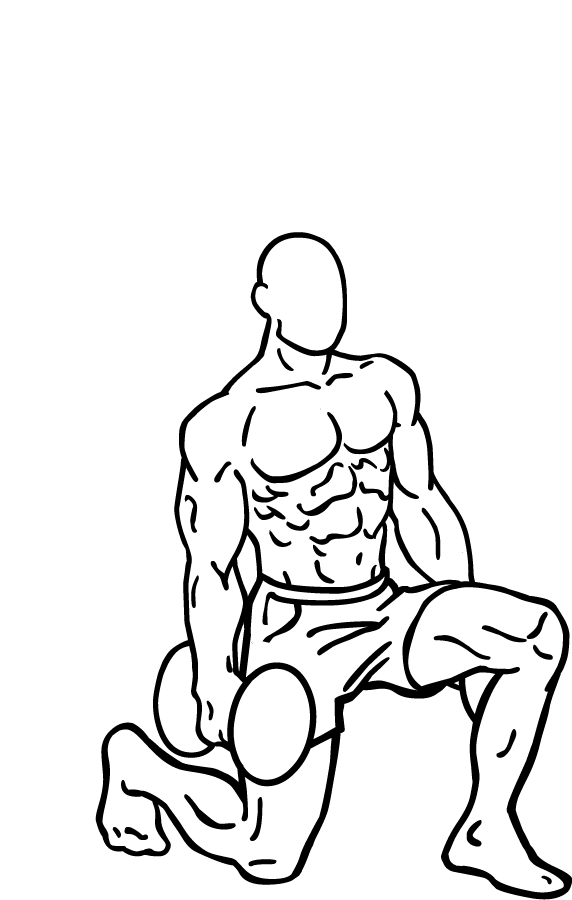Last Updated on September 30, 2014
When it comes to building strength in your legs, few exercises are as effective and versatile as dumbbell lunges. This powerful movement not only targets your hamstrings but also engages your glutes, quadriceps, and calves, making it an essential part of any leg workout. In this guide, we’ll delve into the benefits of dumbbell lunges, detailed steps on how to perform them correctly, variations to keep your routine exciting, and tips to avoid common mistakes. Let’s get started!
Why Choose Dumbbell Lunges?
Dumbbell lunges are a compound exercise, meaning they work multiple muscle groups at once. This makes them an efficient choice for those looking to maximize their workout time. Here are some benefits of incorporating lunges into your fitness routine:
- Strengthening Key Muscle Groups: Lunges primarily target the hamstrings, quadriceps, glutes, and calves. By engaging these muscle groups, you build strength and improve overall leg function.
- Enhancing Balance and Stability: Lunges require balance and coordination, making them a great exercise for improving your stability. This is especially beneficial for athletes or those looking to enhance their performance in sports.
- Boosting Flexibility: The movement involved in lunges helps increase flexibility in the hips and legs, promoting better overall mobility.
- Core Engagement: As you perform lunges, your core muscles work to stabilize your body, providing a secondary workout for your abdominals and lower back.
- Customization and Variations: Dumbbell lunges can be easily modified to suit various fitness levels. Whether you’re a beginner or an advanced athlete, you can adjust the weight and intensity to meet your needs.
How to Perform Dumbbell Lunges: A Step-by-Step Guide
Ready to add dumbbell lunges to your workout? Follow these steps to ensure you’re performing them correctly:
1. Get Your Equipment Ready
You’ll need a pair of dumbbells. Choose a weight that challenges you but allows you to maintain proper form throughout the exercise.
2. Starting Position
- Stand with your feet about 8 inches apart, with your toes facing forward.
- Grasp a dumbbell in each hand, letting them hang at your sides.
3. Engage Your Core
Before you start, engage your core by drawing your belly button in toward your spine. This will help stabilize your body throughout the movement.
4. Step Forward
- Take a step forward with one foot, approximately 2-3 feet, ensuring your step is long enough to create a 90-degree angle at your front knee.
- As you step, keep your upper body straight and your back flat.
5. Lower Your Body
- Slowly lower your body by bending both knees. Your back knee should lower toward the ground, but do not let it touch the floor.
- Aim to keep your front knee aligned directly over your ankle to prevent any strain.
6. Hold and Return
- Pause for a moment when your rear knee is just above the floor.
- Push through your front heel to return to the starting position.
7. Repeat on the Opposite Side
- Switch legs and repeat the movement on the other side, ensuring you maintain the same form and technique.
Tips for Perfecting Your Dumbbell Lunges
To maximize the benefits of dumbbell lunges and avoid common mistakes, keep these tips in mind:
- Maintain Proper Form: Focus on keeping your front knee aligned over your ankle to prevent any undue strain on your knee joint. Avoid letting your knee extend beyond your toes.
- Keep Your Upper Body Straight: Maintain a straight posture throughout the movement. Your torso should remain upright, with your chest open and shoulders back.
- Control Your Movements: Avoid rushing through the exercise. Slow and controlled movements are key to effectively engaging the targeted muscles and preventing injury.
- Breath Control: Inhale as you step forward and lower your body, then exhale as you return to the starting position.
- Start Slow: If you’re new to lunges, start without weights until you feel comfortable with the movement. Gradually add weight as you gain strength and confidence.
Variations of Dumbbell Lunges
To keep your workouts fresh and challenging, try incorporating these variations of dumbbell lunges:
- Reverse Lunges: Instead of stepping forward, step backward into the lunge. This variation places less strain on the knees and can be easier for beginners.
- Walking Lunges: Instead of returning to the starting position after each lunge, continue stepping forward into the next lunge, creating a walking motion. This adds an element of endurance to the exercise.
- Lateral Lunges: Step to the side instead of forward. This targets your inner thighs and helps improve lateral strength and stability.
- Curtsy Lunges: Step one leg back and across your body, like a curtsy. This variation works the glutes and inner thighs more intensely.
- Dumbbell Lunges with a Twist: As you lunge forward, twist your torso toward your front leg. This engages your core and adds a rotational element to the movement.
Common Mistakes to Avoid
When performing dumbbell lunges, be mindful of these common mistakes:
- Leaning Forward: This can put unnecessary pressure on your knees and compromise your form. Keep your torso upright and shoulders back.
- Allowing the Front Knee to Cave In: Ensure your knee stays aligned with your ankle throughout the movement. Consider using a mirror or filming yourself to check your form.
- Rushing the Movement: Performing lunges too quickly can lead to poor form and increase the risk of injury. Focus on controlled movements.
Incorporating Dumbbell Lunges into Your Workout Routine
Dumbbell lunges can be integrated into various types of workouts, whether you’re focusing on strength training, endurance, or flexibility. Here are some suggestions:
- Leg Day: Include lunges as part of your leg workout routine, along with squats, deadlifts, and calf raises.
- Full-Body Workouts: Combine lunges with upper body exercises like dumbbell presses, rows, or shoulder raises for a comprehensive workout.
- Circuit Training: Incorporate lunges into a circuit routine, alternating between strength and cardio exercises for an effective workout.
- Warm-Up or Cool Down: Use lunges as a warm-up to activate your leg muscles or as part of your cool-down routine to promote flexibility.
Dumbbell lunges are a powerful exercise that can significantly enhance your leg strength, stability, and overall fitness. By incorporating this movement into your routine and paying attention to your form, you can achieve impressive results and prevent injuries. Whether you’re a beginner or an experienced lifter, dumbbell lunges are a fantastic addition to any workout regimen. So grab those dumbbells, get moving, and enjoy the benefits of this versatile exercise!
Now that you have a comprehensive understanding of dumbbell lunges, it’s time to put this knowledge into practice. Challenge yourself with different variations and weights, and watch your leg strength and endurance soar!Ensure not maintain your front knee at a 90 degree angle, in order to prevent knee injury.








